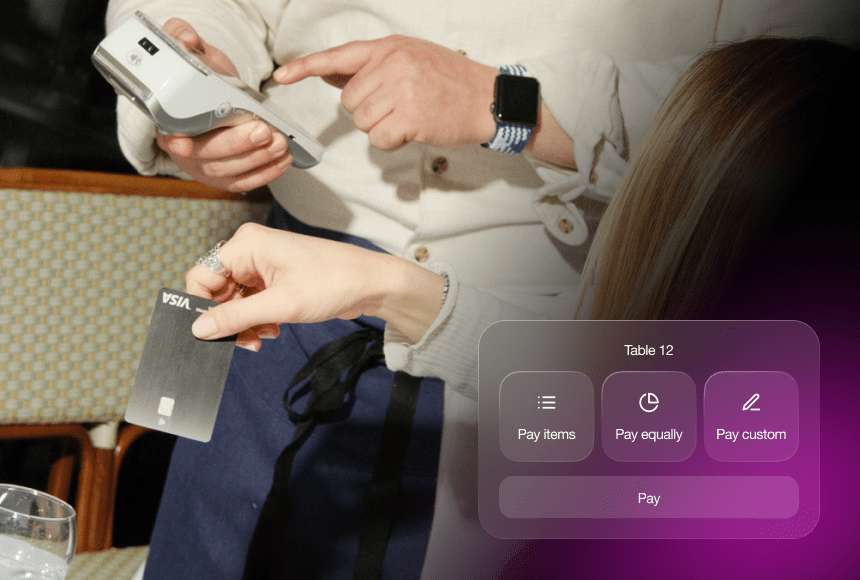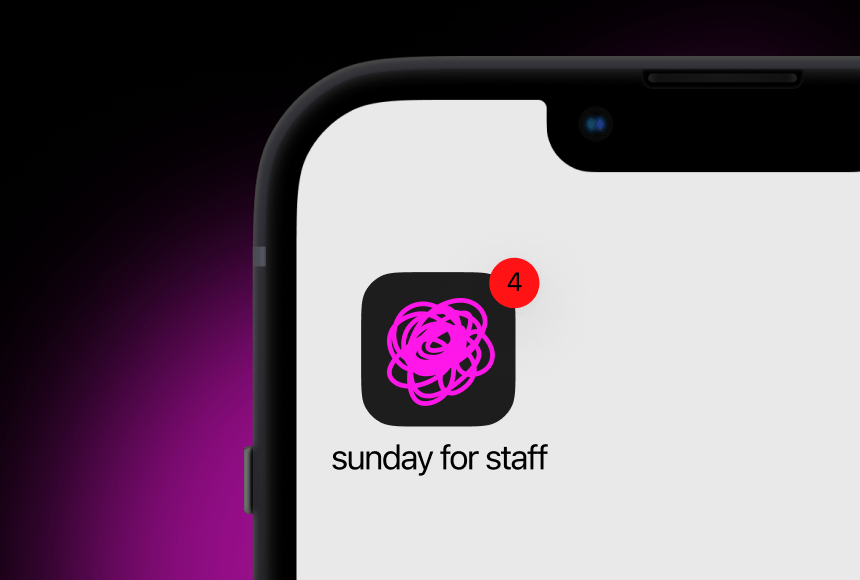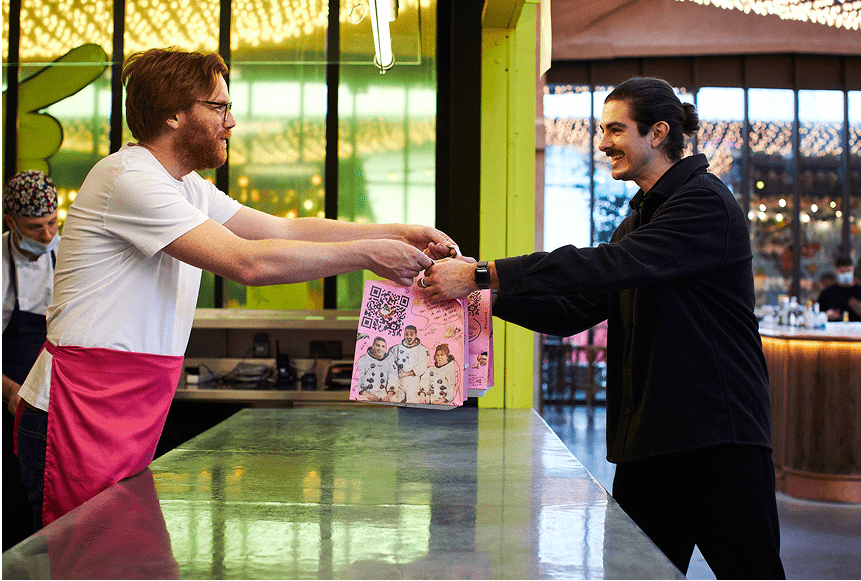
Speeding Up Payment: The Secret Ingredient for Repeat Guests
Why Every Second Counts in Hospitality
Imagine you’re running a bustling restaurant on a Saturday evening. Tables are filled, the kitchen is humming, and everything seems to be going brilliantly—until the payment stage. Your staff are juggling a queue of eager diners waiting to settle their bills, your traditional payment terminal is constantly in motion from one customer to another, and the impatience in the air is almost tangible. That final step in the guest journey—paying the bill—can either leave an excellent lasting impression or spoil an otherwise perfect dining experience.
In the UK’s competitive hospitality scene, speed is more than just efficiency. It’s the final flourish that ties together a guest’s entire dining experience. When the process of settling up is frictionless, guests feel valued, and they’re more inclined to return. On the other hand, a long, drawn-out checkout might encourage your once-happy diners to seek faster, more convenient alternatives elsewhere.
The age-old proverb “time is money” holds a special resonance in food service. While superb food and ambience set the stage, a quick, hassle-free checkout can be the encore that leaves diners applauding. By reducing waiting times and offering convenient payment options, you reduce operational costs and cement a reputation for excellent service. That’s why a faster checkout is more than a nice extra—it’s a genuine competitive advantage.
The Hidden Cost of Slow Payments
Restaurants often focus on menu development, ambience, and marketing campaigns to keep their seats filled. Yet the tail-end of a diner’s journey—paying the bill—is occasionally overlooked. Slow payments come at a cost you can literally measure:
- Lost Revenue: When diners are ready to leave but are stuck waiting to pay, you might face bottlenecks in table turnover. That extra time is a missed opportunity to seat another group of hungry patrons.
- Risk of Negative Reviews: Even if the meal was wonderful, a frustrating checkout can sour the entire experience. In the era of Google reviews, a single slow payment could cost you future business.
- Staff Burnout: When servers and managers scramble to handle multiple card readers, guests asking to split bills, and repeated trips to the till, stress mounts quickly. Over time, that translates into lower job satisfaction and higher turnover.
- Unhappy Guests: Most importantly, slow service at any stage is a prime cause of dissatisfaction. Diners expect efficiency in the UK hospitality scene, and when it’s lacking, they remember.
In many ways, your payment process is a microcosm of your entire restaurant’s ethos. If it’s clunky and time-consuming, diners might wonder if the back-of-house operations are just as disorganised. And if it’s seamless, they’re more likely to associate your business with professionalism, warmth, and courtesy.
UK Payment Trends and Why They Matter
Over the past decade, the UK has become a global leader in cashless and contactless transactions. According to the 2022 Payment Markets Report by UK Finance, nearly 68% of all payments in the United Kingdom were made using contactless methods, a figure that continues to grow. This shift isn’t just about convenience for diners; it’s a beacon of opportunity for restaurant owners eager to streamline their operations.
Card readers are now the norm, but diners are increasingly comfortable with smartphone payments, digital wallets, QR code transactions, and other technology-driven methods. Speed, security, and simplicity guide these choices. From tapping a contactless card to scanning a code with a mobile phone, modern tech helps ensure a smoother flow of guests and fosters an atmosphere of innovation. So if you haven’t yet hopped on board with these newer forms of payment, you might be missing out on a wave of diners who expect such ease as standard.
More interestingly, these contactless or mobile payments can also curb human error. Since guests complete most of the process themselves (by tapping or scanning), there’s a reduced risk of distributing the wrong card or miscalculating charges. Your staff win back time—which they can invest in delivering more personalised service—and your guests benefit from a faster, more transparent checkout.
How Faster Checkout Boosts Guest Satisfaction
Whether it’s a sunny Sunday brunch or an after-work gathering, the last thing your guests want is to hit a snag when they’re ready to pay. Modern diners favour:
- Control: Being able to settle up the moment they’re finished eating, rather than waiting for the bill, fosters a sense of autonomy.
- Transparency: Guests can see the itemised bill on their mobile device or screen, confirm the total, and pay with a few taps. No confusion, no fuss.
- Speed: Quick checkouts mean your diners can move on to their next activity—heading home, seeing a show, or carrying on to another venue—without an extended wait.
- Convenience: When people can pay using whatever method they prefer—credit card, mobile wallet, or QR code—they feel catered to.
Apart from boosting immediate happiness, a swift payment experience can also turn one-time visitors into loyal followers. Quick transactions give your guests a sense that you respect their schedules, and this contributes massively to their perception of your business. That extra layer of efficiency often translates to better reviews, more frequent visits, and word-of-mouth recommendations.
Leveraging Technology Without Losing the Human Touch
One concern restaurant owners sometimes share is that embracing too much technology might dilute the personal interactions that define hospitality. Will adopting a stylish new payment solution make your restaurant seem robotic? The truth is it can strengthen your human connection.
When you automate slow, repetitive tasks—like splitting bills or running a payment terminal from table to table—you give your staff a chance to create memorable moments. They can focus on personalised recommendations, friendly conversation, or ensuring that special dietary needs are catered to. The result is a restaurant that’s both high-tech and warm-hearted.
Take, for example, an easy-to-use mobile payments platform like sunday’s QR code solution. The concept is simple: diners scan a code, settle their bill, and even leave a tip if they wish. At no point do staff have to hold up the entire table with card readers, nor do guests need to wave their arms to get noticed. Moving to digital payment solutions doesn’t replace the human aspect; it enhances it by trimming away the tedious bits of the process.
Strategies to Streamline Your Checkout
You don’t have to do a complete systems overhaul or break the bank on the latest gadget. Plenty of practical steps can shave precious minutes off your diner’s experience—a benefit for both them and you. Here are some strategies:
- Train Your Team: Your staff should know your payment system inside and out—whether it’s a payment terminal or a mobile app. Quick, confident service starts with proper training.
- Use Contactless Payments: It’s a no-brainer. A quick tap of a card or phone is far faster than the multi-step chip-and-PIN process.
- Set Up Digital Menus and QR Codes: If your diners are comfortable ordering from a QR code, they’re more likely to embrace paying that way too. The pattern of scanning is already familiar.
- Offer Split Payments: With the rise of group dining and shared bills, simplifying splitting lowers friction. Technology that lets diners split the bill themselves means fewer complicated scenarios for staff to sort out.
- Maintain Equipment: Keep your card readers updated, test your networks, and ensure your staff know what to do if Wi-Fi or 4G connections falter.
Sometimes, the simplest actions have the greatest impact. When everything proceeds smoothly—even at peak times—diners are bound to notice. And that’s precisely the memory you want them to leave with.
Comparing Traditional Checkout vs. Modern Solutions
Not all payment approaches are created equal. This quick table highlights some of the strengths and potential hiccups you might encounter when deciding how to speed up your service.
| Checkout Method | Key Benefits |
|---|---|
| Traditional Card Reader | Familiar process for all demographics. Trusted and widely used. Yet it can be time-consuming when many guests want to pay simultaneously. |
| Mobile & QR Code Payment | Extremely fast, contactless, and increasingly popular. Allows guests to handle payment on their device, freeing staff to focus elsewhere. Great for table turnover. |
| App-Based Ordering + Payment | All-in-one solution where guests can order and pay in the same app, often leading to quicker turnaround. However, it requires user adoption and can be less personal if not managed with care. |
As always, the choice depends on your restaurant’s ethos, your clientele’s preferences, and your budget. If your regulars love traditional methods, having a card reader is still a must. However, adding an extra layer—like a QR code payment option—gives you flexibility. It also tells your guests that you’re willing to meet them where they’re most comfortable.
Real-World Snapshot: A Case of Efficiency Done Right
Let’s imagine a mid-sized casual dining restaurant called ‘The Bramble Oak.’ On Friday nights, it’s consistently busy from 6 p.m. all the way through closing. Before they introduced modern payment solutions, staff spent nearly half their shift managing back-and-forth trips to tables with the only two card readers available. Guests often had to flag someone down to request the bill, wait for a free card reader, wait for the transaction to process, and then finally leave—nearly a 15-minute ordeal at busy times.
After installing a QR code payment system, guests looking to settle up now simply scan the code at their table with a smartphone. The digital menu and bill pop up instantly. They can choose to pay by Apple Pay, Google Pay, or credit card. Staff rarely have to intervene, except to confirm payment if a diner has a question. Wait times have dropped dramatically:
- Peak-time checkouts went from 15 minutes to less than 5 minutes.
- Tables now turn over up to 20% faster on Friday nights, allowing The Bramble Oak to seat additional guests.
- Staff morale improved because the team could focus on friendly conversation, upselling desserts and beverages, rather than managing payment admin.
- Tips increased by approximately 10%, as guests found the process so convenient that they were more inclined to tap that extra gratuity.
The key takeaway? Streamlining the payment process doesn’t just make guests happy, it also unlocks measurable perks: more revenue, better efficiency, and a leaner, friendlier approach to service.
Going Beyond Payment: Fostering Loyalty and Positive Reviews
One of the biggest side benefits of a simplified checkout is that it leaves guests with a moment to reflect positively on their experience. Think about it: if there’s a hold-up while waiting to pay, their mind may drift to doubts, or they might open social media and start complaining. But if everything runs smoothly, your diner is far more likely to:
- Leave a Glowing Review: Online reputations hinge on those star ratings. With a frictionless payment, guests often feel a nudge to reward good service with kind words (and top marks) online.
- Share the Experience: Word of mouth remains a powerful marketing tool, particularly in hyperlocal communities. People recommend you not just for your food but for your convenience.
- Join a Loyalty Programme: Fast checkouts often pair beautifully with loyalty apps or points programmes. When advertising your promotions is that simple and immediate, diners are more likely to sign up.
- Return Again—Sooner: Efficiency can be surprisingly addictive. If customers know they can pop in for lunch and be back at their desk in time, they’ll visit more frequently.
Adding a prompt to leave a review at the end of a mobile payment can also help you gather immediate feedback. This might highlight areas of improvement you hadn’t considered. Or you might just receive a surge of positive testimonials that boost your standing in local search results.
Implementing Digital Solutions Without Overcomplicating IT
The technical side of modernising how you accept payments can seem intimidating. Let’s demystify it. To adopt a digital or QR code solution, you’ll need:
- A Reliable Internet Connection: The backbone of any digital payment. Invest in high-quality Wi-Fi coverage across your dining area.
- Staff Training: Dedicate time to walk your team through how to use new payment methods, troubleshoot issues, and confidently support guests.
- Security Measures: Work with reputable payment gateways that follow PCI DSS (Payment Card Industry Data Security Standard) guidelines. This ensures card details remain protected.
- Guest Education: Post simple instructions at each table or in the menu regarding how to scan QR codes, add tips, or leave reviews.
That said, a complete overhaul isn’t always necessary. You can introduce a new system in stages—start with digital tip options, add contactless card readers with receipts emailed to guests, and then graduate to fully QR-based payments. Make sure each step is well integrated, well tested, and well received by your team before expanding further.
The Role of Quick Checkouts in Managing Peak Hours
If you’ve ever watched the organised chaos of a restaurant on a busy Saturday night, you know how crucial timing can be. The difference between a smoothly operated peak shift and a chaotic one might come down to whether your guests can pay quickly:
- Reduced Traffic Jams: Rapid payments mean guests spend less time table-bound after eating, opening up precious space for newcomers.
- Optimised Staff Allocation: When paying doesn’t demand constant staff supervision, you can strategically deploy your servers where they’re most needed—taking orders, checking on diners, or running food out from the kitchen.
- Smoother Workflow: A well-structured payment pathway mirrors the flow of the kitchen. Just as chefs rely on timing for plating dishes, your front-of-house team thrives on efficient processes for each stage of service.
- Happier Atmosphere: A dining room with minimal queues at the door and content, unhurried customers fosters a positive buzz. People pick up on that energy, and it enhances the overall dining experience.
Peak hours can either be your greatest revenue source or a hotbed of frustration. Maximising your throughput with faster checkouts can lead to noticeable gains in turnover and staff satisfaction. Plus, you’ll enjoy that intangible yet priceless wave of goodwill from guests who appreciate not being held hostage by the final step of their meal.
Spreading the Benefits to Your Bottom Line
A shorter checkout time does more than enhance comfort. It has a direct impact on key performance indicators that restaurant owners track, such as:
- Table Turnover Rate: More efficient service offers the potential to seat extra guests during prime times.
- Higher Average Spend: When staff are freed from chasing payments, they can focus on upselling. Desserts, extra drinks, and specials are easier to pitch when servers have a moment to connect with diners.
- Lower Labour Costs: Even if you keep staff levels the same, your team’s productivity improves with a well-oiled checkout. Less effort on mundane tasks means better energy for tasks that truly matter.
- Improved Cash Flow: Immediate digital transactions mean fewer banking delays, giving you a clearer picture of daily takings.
Think of the checkout not as a minor step but as a multiplier for everything else you do. A busy restaurant needs to keep pace, and any blockage at the payment stage can act like gridlock at rush hour. If you keep the traffic flowing, you can serve more people and generate higher returns.
The Power of Personalised Service in a Digital World
Even though we’re emphasising speed and technology, it’s worth underlining that hospitality is—first and foremost—a people industry. A friendly greeting, a warm smile, and genuine conversation can’t be replaced by a payment terminal. It’s the combination of personal touches with modern convenience that wows guests.
When you streamline your payment system, your team gains precious minutes to deepen those guest relationships:
- Recommendations: A typical “Would you like to see our dessert menu?” can transform into a personal chat about the home-made banoffee pie if your staff aren’t rushing to process a backlog of bills.
- Special Requests: More time allows you to accommodate special diets, birthdays, or anniversaries with flair—little touches that enhance loyalty.
- Upselling & Cross-Selling: Staff can highlight promotions or signature dishes to diners who appreciate the attentiveness. This approach can lift your sales and create memorable moments.
- Smoother Problem-Solving: If a guest has a concern or an issue, a less frazzled staff member is more likely to resolve it gracefully.
At its core, efficiency in payments is never meant to replace hospitality but to elevate it. Replace the frantic scramble of settling bills with meaningful engagement that leads to a better overall guest experience—and better business results.
Envisioning Where It Can All Lead
Picture the future of your restaurant as one where lines move faster, staff aren’t fumbling for working card readers, and customers consistently praise how easy it is to dine and dash (in the most legitimate sense). Rapid payment mechanisms also open doors to new marketing strategies and upselling opportunities. When you pair your swift checkout with a loyalty scheme or easy feedback prompts, each table could yield valuable insights and repeat business.
With every technological shift, there can be gaps. Perhaps some guests cling to cash payments or might feel uncomfortable scanning codes. A balanced approach—where people can still pay in a traditional way while newer, more efficient channels are clearly highlighted—tends to work best. In the end, the goal is choice and convenience. Let the diner decide, and they’ll often pick the easiest route available.
Frequently Asked Questions
How can I ensure secure payments for guests?
Work with reputable payment service providers compliant with recognised standards like PCI DSS. Maintain strong network security in your venue, educate staff about fraud risks (e.g., card skimming or social engineering attempts), and regularly update your payment software.
Will implementing QR code payments alienate non-tech-savvy diners?
Likely not, if you introduce it as an additional option rather than the only way to pay. Many diners appreciate the simplicity of a QR code, but you can still offer traditional methods, like chip-and-PIN, to those who prefer it.
Does speeding up checkout really improve tips?
In numerous cases, yes. When paying is simple and pleasant, guests are more inclined to reward their servers. People who feel relaxed and unhurried at the end of a meal often leave a generous tip as a gesture of thanks for seamless service.
What if the Wi-Fi goes down?
Have a backup plan. Ideally, you’ll have a secondary internet source or a 4G router that ensures payment systems can still run. Some payment platforms also allow offline transactions that securely process once connectivity is restored.
How do I train my team to handle new payment methods?
Provide hands-on demonstrations before going live. Give staff cheat sheets or step-by-step guides. Encourage them to ask questions and practice using the solution. A little role-play can also help them get comfortable with explaining the new process to guests.
Ultimately, a faster checkout does far more than wrap up a meal—it brings guests back. Speed, convenience, and a personal touch turn an ordinary transaction into an experience, sparking loyal, appreciative diners who recommend your restaurant to friends, neighbours, and online communities. Efficiency doesn’t come at the cost of hospitality; it elevates it. By rethinking your payment process, you’ll save time, boost revenue, and build a rock-solid reputation for guest-focused service that resonates long after the last spoonful of dessert is gone.
Find out more today
Drop us your details below and we’ll reach out within the next 24
More tips means a better service.
3X more tips mean 3X better guest-experience, and 3X better staff-retention.




